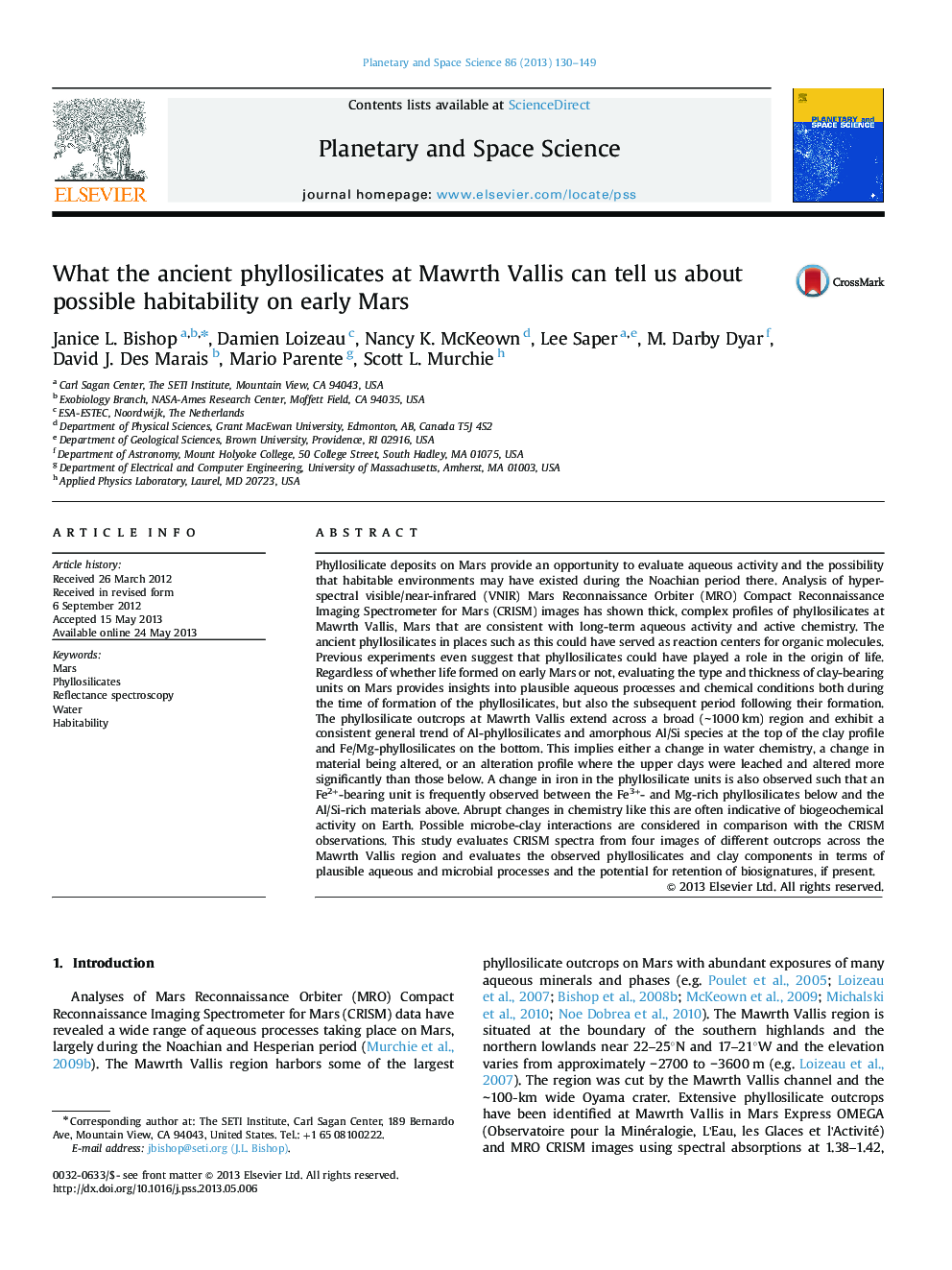| کد مقاله | کد نشریه | سال انتشار | مقاله انگلیسی | نسخه تمام متن |
|---|---|---|---|---|
| 1781218 | 1523950 | 2013 | 20 صفحه PDF | دانلود رایگان |
عنوان انگلیسی مقاله ISI
What the ancient phyllosilicates at Mawrth Vallis can tell us about possible habitability on early Mars
دانلود مقاله + سفارش ترجمه
دانلود مقاله ISI انگلیسی
رایگان برای ایرانیان
کلمات کلیدی
موضوعات مرتبط
مهندسی و علوم پایه
علوم زمین و سیارات
فیزیک زمین (ژئو فیزیک)
پیش نمایش صفحه اول مقاله

چکیده انگلیسی
Phyllosilicate deposits on Mars provide an opportunity to evaluate aqueous activity and the possibility that habitable environments may have existed during the Noachian period there. Analysis of hyperspectral visible/near-infrared (VNIR) Mars Reconnaissance Orbiter (MRO) Compact Reconnaissance Imaging Spectrometer for Mars (CRISM) images has shown thick, complex profiles of phyllosilicates at Mawrth Vallis, Mars that are consistent with long-term aqueous activity and active chemistry. The ancient phyllosilicates in places such as this could have served as reaction centers for organic molecules. Previous experiments even suggest that phyllosilicates could have played a role in the origin of life. Regardless of whether life formed on early Mars or not, evaluating the type and thickness of clay-bearing units on Mars provides insights into plausible aqueous processes and chemical conditions both during the time of formation of the phyllosilicates, but also the subsequent period following their formation. The phyllosilicate outcrops at Mawrth Vallis extend across a broad (â¼1000Â km) region and exhibit a consistent general trend of Al-phyllosilicates and amorphous Al/Si species at the top of the clay profile and Fe/Mg-phyllosilicates on the bottom. This implies either a change in water chemistry, a change in material being altered, or an alteration profile where the upper clays were leached and altered more significantly than those below. A change in iron in the phyllosilicate units is also observed such that an Fe2+-bearing unit is frequently observed between the Fe3+- and Mg-rich phyllosilicates below and the Al/Si-rich materials above. Abrupt changes in chemistry like this are often indicative of biogeochemical activity on Earth. Possible microbe-clay interactions are considered in comparison with the CRISM observations. This study evaluates CRISM spectra from four images of different outcrops across the Mawrth Vallis region and evaluates the observed phyllosilicates and clay components in terms of plausible aqueous and microbial processes and the potential for retention of biosignatures, if present.
ناشر
Database: Elsevier - ScienceDirect (ساینس دایرکت)
Journal: Planetary and Space Science - Volume 86, 15 September 2013, Pages 130-149
Journal: Planetary and Space Science - Volume 86, 15 September 2013, Pages 130-149
نویسندگان
Janice L. Bishop, Damien Loizeau, Nancy K. McKeown, Lee Saper, M. Darby Dyar, David J. Des Marais, Mario Parente, Scott L. Murchie,